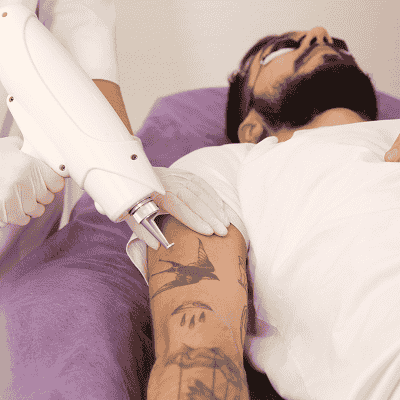Preparing for Laser Tattoo Removal: A Step-by-Step Guide
Introduction
Tattoos are often seen as a form of self-expression, but what happens when that expression no longer resonates with you? Laser tattoo removal has become a popular option for those seeking to erase ink from their skin. However, preparing for this procedure requires careful consideration and planning. This article aims to provide a comprehensive step-by-step guide to help you navigate the preparations for Laser Tattoo Removal Oman.

Understanding Laser Tattoo Removal
Before diving into the preparations, it’s important to understand how laser tattoo removal works. The procedure uses high-intensity light beams to break down the ink particles in the skin. The body's immune system then gradually removes these smaller ink particles. Several factors can influence the effectiveness of the removal, including the type of ink used, the depth of the tattoo, the size of the tattoo, and individual skin types.
Step 1: Research and Choose a Qualified Practitioner
Finding a Reputable Clinic
Your first step in preparing for laser tattoo removal is to find a qualified practitioner or clinic. Look for professionals who are certified and have experience with laser tattoo removal. Reading reviews, asking for recommendations, and checking credentials can help you find a reputable provider. Ensure that the clinic follows proper hygiene standards and uses FDA-approved lasers.
Initial Consultation
Once you have found a potential clinic, schedule an initial consultation. During this meeting, the practitioner will assess your tattoo, discuss your medical history, and explain the procedure in detail. Don’t hesitate to ask questions about the laser technology used, the number of sessions required, and the expected outcomes.
Step 2: Evaluate Your Tattoo
Assessing Size and Color
Evaluate the characteristics of your tattoo. Larger tattoos with darker colors tend to require more sessions for removal. Professional tattoos, which typically use more pigment and deeper ink, are usually harder to remove than amateur tattoos. Understanding these aspects will help you set realistic expectations.
Skin Type Consideration
Different skin types react differently to laser treatments. Practitioners may use different laser settings based on your skin type and color. Discuss your skin type during the consultation, as this will help tailor the treatment to your specific needs.
Step 3: Follow Pre-Treatment Guidelines
Avoid Sun Exposure
To prepare your skin for the treatment, it’s crucial to avoid sun exposure for at least four weeks before your appointment. Sunburned skin can lead to complications during the procedure and affect the healing process. Use sunscreen with a high SPF and wear protective clothing if you must be outdoors.
Stop Certain Medications
Some medications can affect your skin's sensitivity or healing. Consult your practitioner about any medications you’re currently taking, especially blood thinners, which can increase bleeding. You may need to stop certain medications for a week or more before your treatment.
Hydrate and Nourish Your Skin
Hydrating your skin can improve its resilience and help it recover better post-treatment. Drink plenty of water and use moisturizers in the days leading up to your appointment. Additionally, eating a balanced diet rich in vitamins and minerals can support skin health.
Step 4: Prepare for the Day of Treatment
Arrive with Clean Skin
On the day of your appointment, make sure to arrive with clean skin. Avoid using lotions, creams, or any other products on the area to be treated. This will help minimize the risk of infection and ensure that the laser can penetrate the skin effectively.
Wear Comfortable Clothing
Choose loose, comfortable clothing that allows easy access to the tattooed area. This can help you feel more at ease during the procedure.
Bring a Support Person
If you’re nervous about the procedure, consider bringing a friend or family member with you for support. They can help ease your anxiety and provide comfort during and after the session.
Step 5: Understand the Aftercare
Follow Post-Treatment Instructions
After your treatment, your practitioner will provide specific aftercare instructions. This may include applying ointment to the treated area, keeping it clean, and avoiding sun exposure. Adhering to these guidelines is crucial for proper healing and maximizing results.
Monitor Your Healing Process
Pay close attention to how your skin reacts post-treatment. Swelling, redness, and blistering can occur, and these are usually normal. However, if you notice excessive pain, prolonged swelling, or signs of infection, contact your practitioner immediately.
Conclusion
Preparing for laser tattoo removal is a crucial step toward achieving the desired results. By researching qualified practitioners, evaluating your tattoo, following pre-treatment guidelines, and understanding aftercare, you can ensure a smoother process. Remember that patience is key; multiple sessions may be required for complete removal, and individual results can vary. With the right preparation and care, you can take significant steps toward reclaiming your skin and moving forward with confidence.
